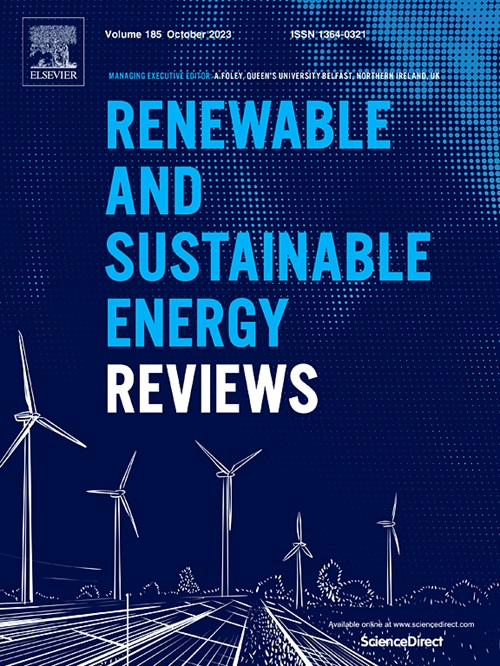Revolutionizing hydrogen production and storage: Harnessing the power of MXenes for a greener and sustainable future
IF 16.3
1区 工程技术
Q1 ENERGY & FUELS
引用次数: 0
Abstract
Among many types of electrocatalyst materials for the hydrogen evolution reaction (HER), two-dimensional (2D) transition metal nitrides and carbides (MXenes) stand out for their distinctive characteristics. The presence of transition metals (TMs) in their structure and terminations imparts metallic conductivity, allowing for variable surface chemistry. Although early research on pure MXenes showed modest HER overpotentials, the kinetics of the hydrogen (H2) adsorption and desorption processes still restrict their electrocatalytic effectiveness. To improve the HER kinetics of MXenes, doping has recently been investigated as a viable method for optimizing their surface and electrical characteristics. This research aims to investigate the impact of doping in MXenes by substituting functional groups, including various elements/species into the MXene matrix, and altering the interface to enhance environmentally friendly production of hydrogen. Additionally, several hydrogen storage techniques have been examined. Currently, hydrogen is employed either as a compressed gas contained in high-pressure tanks or as a liquid held in tanks. Nonetheless, the safety issues linked to traditional storage methods render the solid-state storage method an attractive option. This architecture enables reversible hydrogen storage through the potential of lightweight, high-performance solid-state materials like MXenes. Despite their considerable promise, the utilization of MXenes in hydrogen storage has not been thoroughly explored. This study provides a thorough overview of the existing applications of MXenes and MXene-based materials for hydrogen generation and storage, addressing the challenges they encounter and their possible potential prospects.

求助全文
约1分钟内获得全文
求助全文
来源期刊

Renewable and Sustainable Energy Reviews
工程技术-能源与燃料
CiteScore
31.20
自引率
5.70%
发文量
1055
审稿时长
62 days
期刊介绍:
The mission of Renewable and Sustainable Energy Reviews is to disseminate the most compelling and pertinent critical insights in renewable and sustainable energy, fostering collaboration among the research community, private sector, and policy and decision makers. The journal aims to exchange challenges, solutions, innovative concepts, and technologies, contributing to sustainable development, the transition to a low-carbon future, and the attainment of emissions targets outlined by the United Nations Framework Convention on Climate Change.
Renewable and Sustainable Energy Reviews publishes a diverse range of content, including review papers, original research, case studies, and analyses of new technologies, all featuring a substantial review component such as critique, comparison, or analysis. Introducing a distinctive paper type, Expert Insights, the journal presents commissioned mini-reviews authored by field leaders, addressing topics of significant interest. Case studies undergo consideration only if they showcase the work's applicability to other regions or contribute valuable insights to the broader field of renewable and sustainable energy. Notably, a bibliographic or literature review lacking critical analysis is deemed unsuitable for publication.
 求助内容:
求助内容: 应助结果提醒方式:
应助结果提醒方式:


